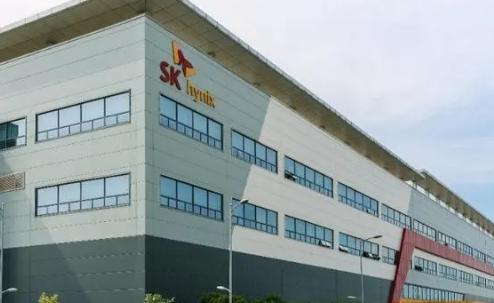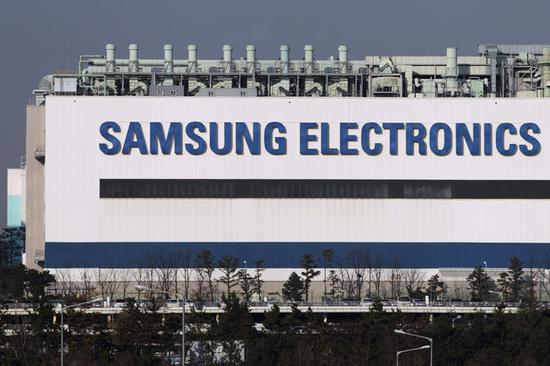Investing in the Future, Samsung and SK Hynix Seek Low-Interest Loans
 On July 1st, according to a report by The Korea Economic Daily, South Korea's two major semiconductor giants, Samsung Electronics and SK Hynix, are considering applying for substantial low-interest loans from the Korea Development Bank (KDB) to support their business expansion and investment in the chip IC industry. This move comes against the backdrop of the growing global demand for semiconductors and also reflects the strong support of the South Korean government for its semiconductor industry.
On July 1st, according to a report by The Korea Economic Daily, South Korea's two major semiconductor giants, Samsung Electronics and SK Hynix, are considering applying for substantial low-interest loans from the Korea Development Bank (KDB) to support their business expansion and investment in the chip IC industry. This move comes against the backdrop of the growing global demand for semiconductors and also reflects the strong support of the South Korean government for its semiconductor industry.
Korea Development Bank
The Korea Development Bank, as a wholly state-owned policy financial institution, has the primary task of providing long-term funding support for the country's economic development. In this report, the bank plays a crucial role as it will provide up to 17 trillion won in low-interest loans to semiconductor companies. This loan plan is part of the "Comprehensive Support Plan for the Semiconductor Ecosystem" announced by the Ministry of Economy and Finance of South Korea, aimed at promoting the further development of South Korea's semiconductor industry by providing preferential interest rates.

SK Hynix's Financial Strategy
SK Hynix plans to apply for a loan of 3 trillion won, mainly to bridge the gap between its large-scale investment plans and existing capital reserves. The company has invested over 120 trillion won in the semiconductor cluster in Yongin, Gyeonggi Province, and has also announced plans to invest $4 billion in building an AI memory chip packaging plant in Indiana, USA. Although SK Hynix has a cash reserve of 8.2 trillion won, it still has a significant gap compared to the huge investment plan. Currently, SK Hynix has borrowed 25 trillion won from financial companies, and this new low-interest loan will further alleviate its financial pressure.
Samsung Electronics' Financial Considerations
Compared with SK Hynix, Samsung Electronics' consideration of applying for a 5 trillion won low-interest loan is mainly for financial cost considerations, not for financial tension. As of the end of 2023, Samsung Electronics holds as much as 91 trillion won in cash and cash equivalents. However, the company borrowed about 22 trillion won from its subsidiary Samsung Display at an annual interest rate of 4.6% in early 2023, while the low-interest loan provided by the Korea Development Bank has an interest rate of only 3.5%. This interest rate difference is the main reason why Samsung Electronics is considering applying for the loan.
The First Long-Term Loan in 20 Years
If Samsung Electronics ultimately decides to apply for this loan, it will be the company's first long-term loan for large-scale construction investment in 20 years. In addition, Samsung Electronics is also considering optimizing its capital structure by issuing corporate bonds. The last corporate bond issuance in the global market was in 2012, and the last bond issuance in South Korea dates back to 2001.
Conclusion
The move by Samsung Electronics and SK Hynix not only demonstrates South Korea's ambition in the global semiconductor industry but also reflects the government's firm support for its companies to maintain competitiveness in this key technology field. With the continuous growth of global demand for semiconductors, the expansion plans of these two companies are expected to further consolidate South Korea's leading position in the global semiconductor industry.
Recommended Models
● The STMicroelectronics STM32F103RCT6 is an STM32 MCU IC Series produced by ST. It has a CPU frequency of 72MHz and 256KB of Flash storage, and 48KB of SRAM. It is widely used in embedded design and development, motor drive and control, medical equipment, portable equipment, wireless communication, industrial automation, imaging, video and consumer electronics.
● Micron TE28F128J3D75A is a FLASH-NOR Memory integrated circuit (IC). It has a fast data access speed with a speed rating of 75ns, a storage capacity of 16M bytes, and a data width of 8 or 16 bits, depending on its configuration. Application areas include, but are not limited to, embedded systems, industrial controls, communications equipment, consumer electronics, and other electronic devices that require data storage and fast access.
● Xilinx/AMD XC2C512-10FT256C is a complex programmable logic device (CPLD) chip with high performance, low power consumption and flexible configuration. With 512 macro cells, it is designed for high performance and low power applications, suitable for high-end communication devices and battery-powered devices.
Website: www.conevoelec.com
Email: info@conevoelec.com








